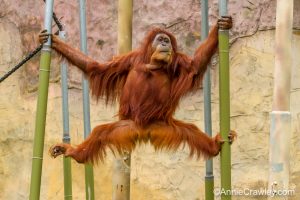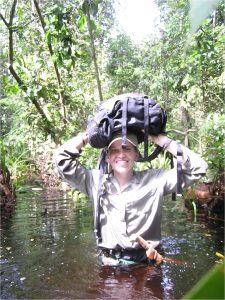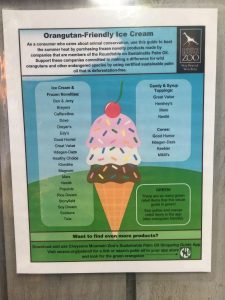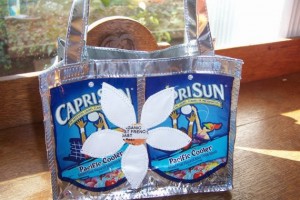
Photo credit: Annie Crawley
Have you ever interviewed anyone before? When I spoke to Meredith Bastian, the Curator of Primates at Smithsonian’s National Zoo, I made a HUGE interview goof.
Meredith was the first scientist I interviewed for Zoo Scientists to the Rescue. Photographer Annie Crawley and I were in Washington, D.C. to accept the Green Earth Book Award for Plastic, Ahoy! Investigating the Great Pacific Garbage Patch, so we decided to get a jump on our next book.
Interview goof
I had borrowed a digital recorder and microphone from a friend to help with the note-taking–you can see it in the lower right corner of the video. But what you cant see is that I forgot to turn on the microphone switch. The digital recorder wasn’t recording anything Meredith said and I wasn’t taking many notes!
Thank goodness Annie also filmed the interview. She really saved me that day. Thank you, Annie!
After you watch the video…
Catch up with Meredith in this short Q&A
Patricia: Your official title at Smithsonian’s National Zoo is Curator of Primates. What does a zoo curator do?
Meredith: A zoo curator does a little bit of everything. We supervise a keeper staff who feed, clean up after, enrich, and train the animals in our living collection. In my case I supervise the primate keeper staff and also oversee the behavioral, cognitive, and health-related research that takes place within our unit. Zoo curators also educate visitors about the threats the wild counterparts of the animals in their collection face so they can learn how to help in their conservation. As a zoo curator I also communicate daily with the zoo vets, maintenance staff, planning and exhibits teams to keep up with the daily operational needs of the primate unit and both shorter and longer-term plans relating to the primate collection at NZP. I also maintain the primate unit spending plan, and conduct original and collaborative research with our non-human primates. Finally, zoo curators work closely with and participate in species-level management groups. I am an active member of the Ape TAG (Taxon Advisory Group), Orangutan SSP (Species Survival Plan), and Gibbon/Siamang SSP. Through these groups I help make decisions for various captive ape populations throughout North America and I also maintain field conservation databases for all three management groups, working closely with field colleagues to help bridge the ape field and captive communities.
Patricia: When I initially interviewed you for the book, you told me you added Zoo Scientists to the Rescue to your list of professional goals for the year. Why was this book important to you?
Meredith: Zoo Scientists to the Rescue was on my list of professional goals for the year because it represents the aspect of my job that I appreciate the most – making important links between the Zoo’s living primate collection and their counterparts in the wild. I strive to align my captive management decisions with what I learned about wild apes in the field and the story described in this book explains my inspiration for this management philosophy.
Patricia: You established many friendships and professional relationships during your field work in Borneo. Do you stay in touch with these people? Can you share some new developments about orangutans in the field?
Meredith: I do stay in touch with many of my field colleagues. I recently accepted an invitation at the request of one of my field colleagues to give a lecture in her Anthropology department. We are currently planning a collaborative wild orangutan project at a site she co-directs back in Indonesia to realize my goal of bringing together field and zoo staff who work with orangutans. At NZP we are collecting urine from some of our orangutans to validate current methods for study maternal energetics through urine collected in the wild. I also stay in close touch with field colleagues who conduct the orangutan nest surveys that help estimate population density in various areas of their natural wild range. Recent surveys have included areas not accessed before. A new species of orangutan has also recently been recognized through genetic analyses coming out of the same lab in Zurich, Switzerland that ran the fecal samples collected for my PhD field work. This new species is found in one part of Sumatra but is genetically distinct from the Sumatran orangutan. There are only about 800 individuals of this species, making it the most critically endangered of all living great apes.
Patricia: Kids reading Zoo Scientists to the Rescue may feel overwhelmed with the scope of the orangutans’ plight. How would you counsel them to persevere and continue to advocate change?
Meredith: It is understandable that kids may feel overwhelmed . The best advice I can give to counsel them to persevere and continue to advocate change is to remain patient and dedicated to learning as much as they can and to educating others about the importance of being a responsible consumer, recycling and saving energy, all actions that are critical to taking care of the environment and that ultimately help increase the chances that orangutans will still be with us for future generations to learn about and learn from.
Are you craving more info about orangutans? Try these links:
- Orangutan Fact Sheet
- Download the following resources from my website:
- our #ProtectOurWorld Challenge Poster
- Listen to the first chapter of Zoo Scientists to the Rescue on TeachingBooks.net
- Pinterest activities
- Teacher Guide









Leave a Reply
Your email is safe with me.